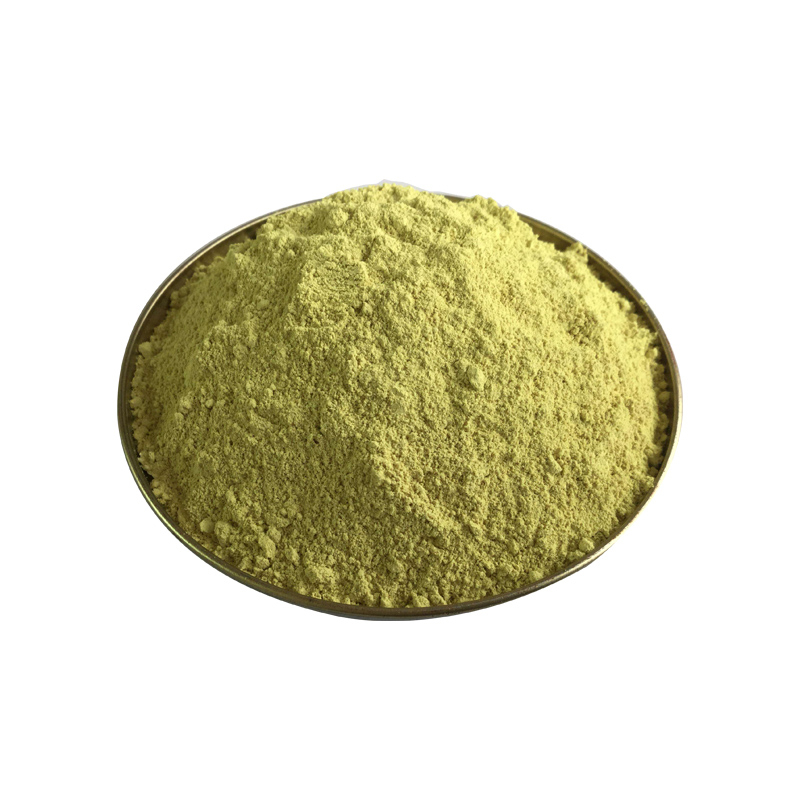Products Description of TetrachloroethyleneCAS#127-18-4Tetrachloroethylene, also known as perchloroethylene, is a compound formed by replacing all hydrogen atoms in ethylene with chlorine in terms of molecular structure. It was first produced by Faraday in 1821 when he pyrolyzed hexachloroethane. It is a colorless, transparent liquid with an ether-like odor. It is non-flammable. Its relative molecular mass is 165.85. Its relative density is 1.6220. Its melting point is -22.7℃. Its boiling point is 121.2℃ and 33.2℃ (4.000×103Pa). Its refractive index is 1.5055.
Contact Now
Tetrachloroethylene CAS#127-18-4 Tetrachloroethylene (chemical method Cl2C=CCl2) is a chlorinate hydrocarbon used as an industrial solvent and cooling liquid in electrical transformers. It is a colorless, volatile, nonflammable liquid with an ether-like odor. The most important section of tetrachloroethylene is produced by means of excessive temperature chlorinolysis of mild hydrocarbons.Tetrachloroethylene is an awesome solvent for natural materials.
Contact Now
Products Description of Rutin CAS#153-18-4Rutin is a rutin glycoside of the flavonol compound quercetin. It is a flavonoid compound extracted from plants and exists in rue, bitter buckwheat, locust tree buds, catalpa leaves, tomato stems, leaves and seed shells.Dried buckwheat that is about to bloom contains about 3%. Jujube, hawthorn, ginkgo, wolfberry, motherwort, bupleurum, selfheal, aloe, Gynostemma pentaphyllum, etc. all contain rutin.
Contact Now
Products Description of Rutin CAS#153-18-4Rutin is the rutin glycoside of the flavonol compound quercetin. It is a flavonoid compound extracted from plants. It is found in rue, tartary buckwheat, sophora buds, catalpa leaves, tomato stems, leaves and seed shells. It is about to bloom. Current dry buckwheat contains about 3%, and jujube, hawthorn, ginkgo, wolfberry, motherwort, bupleurum, prunella vulgaris, aloe, Gynostemma pentaphyllum, etc. all contain rutin.
Contact Now
Products Description of Chloramine B 99% CAS#127-52-6Chloramine B, also known as sodium benzenesulfonyl chloride, is a white crystalline powder. It is explosive when exposed to impact, friction, fire or other ignition sources.
Contact Now
Products Description of Chloramine B CAS#127-52-6Chloramine B hydrate is a white crystalline powder.Chloramine B Chemical PropertiesMelting point 190°CBoiling point 189℃[at 101 325 Pa]density 1.484[at 20℃]vapor pressure 0Pa at 20℃storage temp. Keep in dark place,Inert atmosphere,2-8°Csolubility H2O: 0.1 g/mL, clearform solidpka1.88[at 20 ℃]Water Solubility 0.1 g/mLMerck 14,2074BRN 3599287InChIKeyKDNCILYKSYKEFJ-UHFFFAOYSA-NLogP0.14 at 26℃EPA Substance Registry SystemChloramine B (127-52-6) Safety InformationHazard Codes CRisk
Contact Now
Product Description:We are proud to present our top-grade Dimethylacetamide (DMAC), scientifically known as N,N-dimethylacetamide or N,N-dimethyl acetamide, with the CAS No. 127-19-5.
Contact Now
Products Description of 2,2-Dimethylthiazolidine CAS#19351-18-92,2-Dimethylthiazolidine, an organic chemical substance, molecular formula: C5H11NS.2,2-Dimethylthiazolidine Chemical PropertiesBoiling point 61 °C / 15mmHgdensity 1,02 g/cm3vapor pressure 2.01hPa at 25℃refractive index 1.5100-1.5140Fp 55°Cstorage temp. 2-8°C(protect from light)pka8.97±0.40(Predicted)form clear liquidcolor Colorless to Light orange to YellowInChIInChI=1S/C5H11NS/c1-5(2)6-3-4-7-5/h6H,3-4H2,1-2H3InChIKeySNPQRYOQWLOTFA-UHFFFAOYSA-NSMILESS1CCNC1(C)CLogP1.38CAS DataBase Refer
Contact Now
Products Description of Ammonium thiosulfateCAS#7783-18-8Ammonium thiosulfate, chemical formula (NH4)2S2O3. Molecular weight 148.20. Colorless monoclinic crystals. Melting point 150℃ (decomposition), relative density 1.679. Easily soluble in water, insoluble in ethanol, slightly soluble in acetone. Its aqueous solution will precipitate sulfur when left for a long time. Above 50℃, its concentrated aqueous solution gradually decomposes into sulfur and sulfate. In the presence of ammonia and hydrocyanic acid, ammonium thiocyanate and ammonium sulfite are formed.
Contact Now
Products Description of Glutathione CAS#70-18-8Glutathione is a tripeptide compound formed by glutamic acid, cysteine and glycine through peptide bond condensation. It is the most important low-molecular thiol for anti-oxidative stress in mammalian cells. It was discovered in 1921 and its chemical structure was determined in 1930. Dr. Al Mindell, a famous American nutrition and health expert, called glutathione a triple-effective anti-aging amino acid. It is also known as nature's antioxidant master. It has the appearance of colorless, transparent, elongated granular crystals.
Contact Now
Products Description of PyridiniumCAS#68909-18-2White powderPyridinium, 1-(phenylmethyl)-, ethyl methyl derivs., chlorides Chemical PropertiesBoiling point 116.34℃[at 101 325 Pa]density 1.104[at 20℃]vapor pressure 2hPa at 20℃Water Solubility 100g/L at 30℃InChIInChI=1S/C13H16N.ClH/c1-14(10-6-3-7-11-14)12-13-8-4-2-5-9-13;/h2-10H,11-12H2,1H3;1H/q+1;/p-1InChIKeyNBNVYJFZJWMHPR-UHFFFAOYSA-MSMILESC1[N+](CC2=CC=CC=C2)(C)C=CC=C1.[Cl-]LogP3 at 25℃EPA Substance Registry System1-(Phenylmethyl)pyridinium Et Me derivs., chlorides (68909-18-2)Factory and Equipment ShowFast delivery t
Contact Now
Products Description of Phenylbutazone sodiumCAS#129-18-0Antipyretic and analgesic, used to treat rheumatic and rheumatoid arthritis and gout, etc.Phenylbutazone sodium Chemical Propertiesstorage temp. under inert gas (nitrogen or Argon) at 2-8°CCAS DataBase Reference129-18-0(CAS DataBase Reference)Factory and Equipment ShowFast delivery timeInventory 2-3 working days New production 7-10 working days
Contact Now
Products Description of 2-Amino-3,5-dibromopyrazine CAS#24241-18-72-Amino-3,5-dibromopyrazine is used to prepare conjugated polymers for neurotoxin detection.
Contact Now
Products Description of Naphthalene-2-sulfonic acid CAS#120-18-3White to slightly brown leaf-shaped crystals. Melting point 91℃ (anhydrous), 83℃ (trihydrate), 124℃ (monohydrate). Soluble in water, alcohol and ether.
Contact Now
Products Description of Benzyldimethylhexadecylammonium Chloride CAS#122-18-9Cetaxel chloride, also known as hexadecyl dimethyl benzyl ammonium chloride, is a cationic quaternary ammonium surfactant and one of the components of benzalkonium chloride (benzalkonium chloride is a mixture of benzyl alkyl dimethyl ammonium, in which the alkyl groups are mainly n-C12H25 (dodecane), n-C14H29 (tetradecane) and n-C16H33 (hexadecane)).Benzyldimethylhexadecylammonium chloride Chemical PropertiesMelting point 55-65 °C(lit.)Boiling point 550.14°C (rough estimate)density 0.9089 (rou
Contact Now
Products Description of N,N-Dimethyldodecylamine CAS#112-18-5Colorless liquid. Melting point -20℃, boiling point 247℃, 110-112℃ (0.4kPa), relative density 0.775, refractive index 1.4375.
Contact Now
Products Description of Benzyldimethylhexadecylammonium Chloride CAS#122-18-9Cetaxonium chloride, also known as hexadecyl dimethyl benzyl ammonium chloride, is a cationic quaternary ammonium surfactant and one of the components of benzalkonium chloride (benzalkonium chloride is a mixture of benzyl alkyl dimethyl ammonium, in which the alkyl groups are mainly n-C12H25 (dodecane), n-C14H29 (tetradecane) and n-C16H33 (hexadecane)). Cetaxonium chloride has the characteristics of high lipophilicity and low water solubility.
Contact Now
Formic Acid CAS#64-18-6Formic acid (HCO2H), additionally known as methanoic acid, is the easiest carboxylic acid. Formic acid was once first remoted through the distillation of ant our bodies and was once named after the Latin formica, which means “ant.” Its suitable IUPAC title is now methanoic acid.
Contact Now
Products Description of 5-CHLORO-3-METHYLBENZO[B]THIOPHENE CAS#19404-18-33-Methyl-5-chlorobenzothiophene is a pharmaceutical intermediate. 5-CHLORO-3-METHYLBENZO[B]THIOPHENE CAS#19404-18-3 Chemical PropertiesMelting point 33 °CBoiling point 87 °Cdensity 1.293±0.06 g/cm3(Predicted)storage temp. 2-8°Csolubility soluble in Methanolform powder to lumpcolor White to Yellow to OrangeCAS DataBase Reference19404-18-3(CAS DataBase Reference)Safety InformationHazard Codes Xi,XnRisk Statements 36/37/38-22Safety Statements 26-37/39Hazard Not
Contact Now
Products Description of Formic acid CAS#64-18-6 Formic acid is an important chemical raw material. It was first discovered by Fisher in 1670. A.S.Marggret first produced pure formic acid in 1749.It was first discovered by distilling red ants, hence the name formic acid. Formic acid is widely found in nature, such as in the secretions of red ants, bees, caterpillars, etc., in the leaves and roots of plants, and in fruits. It is the simplest carboxylic acid. Compared with other fatty carboxylic acids, it has a special structure and is more acidic.
Contact Now
Products Description of 3-Amino-1-propanesulfonic acid CAS#3687-18-13-Aminopropanesulfonic acid is a promising product candidate for the treatment of AD. It is currently in phase III clinical trials in North America and Europe. Clinical trial results have been published.
Contact Now
Products Description of 2-Tert-Butylphenol CAS#88-18-62-tert-butylphenol, also known as o-tert-butylphenol, is an organic compound with the chemical formula C10H14O.
Contact Now
Products Description of GALL CAS#8008-63-7Ox bile, the bile or bile of cattle or buffalo. It has the effects of clearing the liver and improving eyesight, promoting bile and clearing the intestines, detoxifying and reducing swelling. Fresh cattle gallbladders are kidney-shaped, about 18 to 20 cm long, about 5 to 6 cm at the widest point, and become cystic with longitudinal wrinkles after drying.
Contact Now
Products Description of 3-Chloro-5-Methylpyridazine CAS#89283-3-183-Chloro-5-methylpyridazine is a pyridine derivative, commonly used as a pharmaceutical intermediate.3-Chloro-5-Methylpyridazine CAS#89283-3-18 Chemical PropertiesMelting point 139-140 °CBoiling point 259.7±20.0 °C(Predicted)density 1.234±0.06 g/cm3(Predicted)storage temp. Inert atmosphere,2-8°Cform liquidpka1.91±0.10(Predicted)color YellowCAS DataBase Reference89283-31-8Safety InformationHazard Codes Xi,XnRisk Statements 22HS Code 2933998090Product Application of 3-Chl
Contact Now




















![5-CHLORO-3-METHYLBENZO[B]THIOPHENE CAS#19404-18-3](https://d3rnfhc14zcmdf.cloudfront.net/cdn/ff/SQtnDOdiT42PpMs1NszZi7Tv_d_DUIp_Dx3j0P5hPM4/1720092385/public/styles/chanpinzhutu/public/2024-07/%E5%BE%AE%E4%BF%A1%E5%9B%BE%E7%89%87_20240702152530_3.jpg?itok=CrylVEjT)













